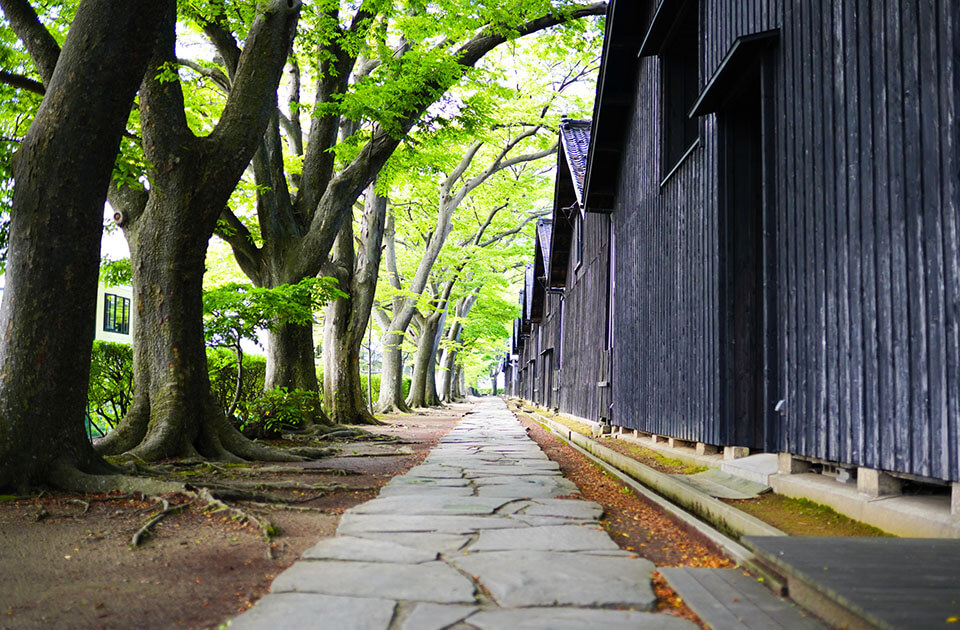This is an active four-day model course that brings you around Niigata and Yamagata prefectures. In Murakami city, Niigata prefecture, you’ll enjoy Sasagawa-nagare Beach, a tea-dyeing experience, as well as a townhouse walk overflowing with feeling. In Tsuruoka city, Yamagata prefecture, you’ll get to go on a tour of the open set where many movies have been filmed, as well as experience ceramics and soba-making in a historical building. You’ll also travel to Shonai town and visit a bakery popular with local residents, as well as a soy-sauce manufacturer with history behind it. In Sakata city, you’ll get to enjoy French cuisine and seafood rice bowls made with local seasonal fish caught at Shonai Beach facing the Sea of Japan. Do come on a journey that will satisfy your stomach too.
Itinerary
nights
days
Day Three
Day One
01
Sightseeing steamship at Sasagawa-nagare Beach
Sasagawa-nagare Beach is a 11km section of coastline that has been selected as one of the 100 Landscapes of Japan.
With its beautiful contrast between dynamic, unusual rocks and a clear sea, the picturesque location has also been designated as one of the country’s natural monuments.

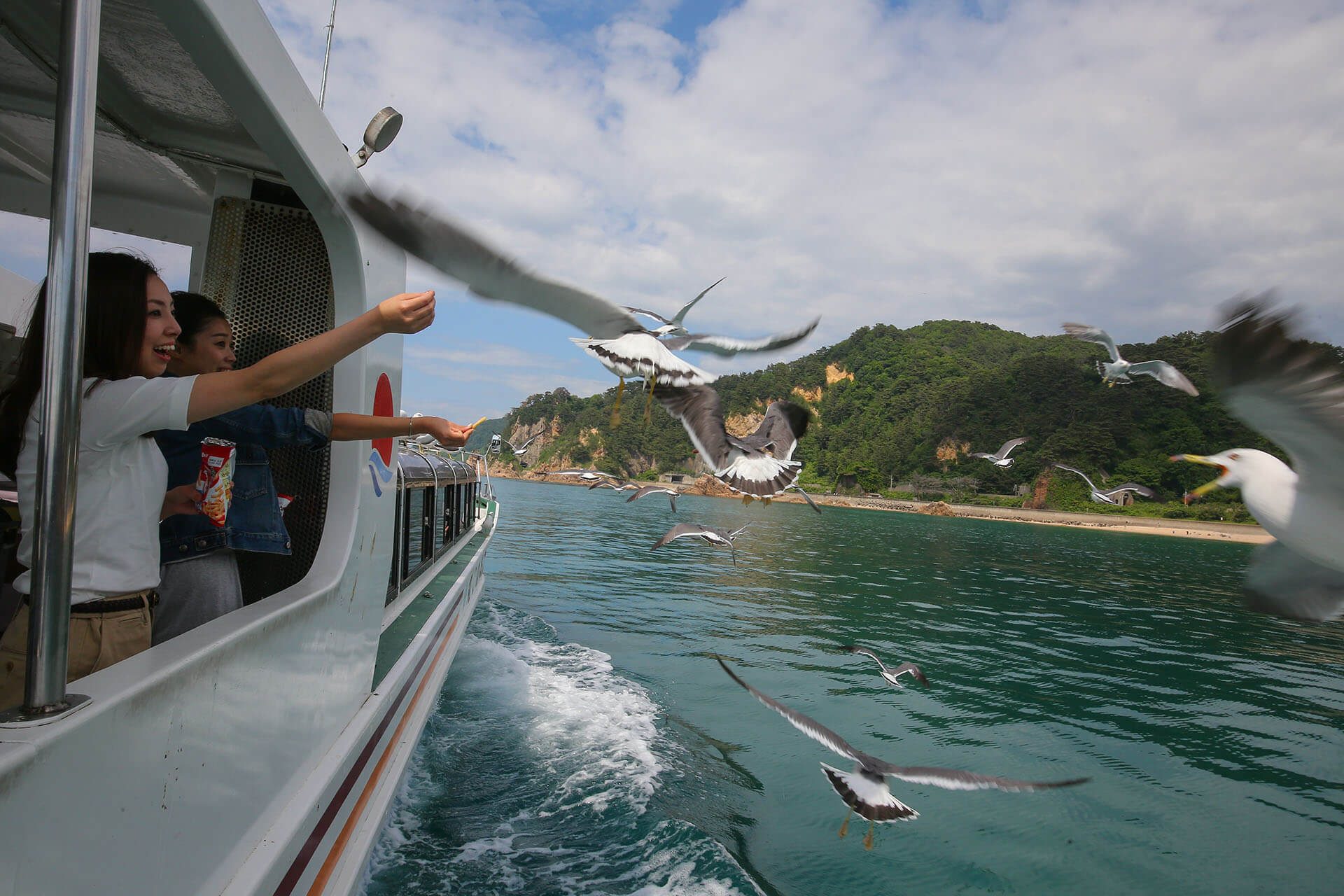
The sightseeing boat that sails around Sasagawa-nagare Beach is also recommended. The Sasagawa-nagare Beach sightseeing steamer takes you on an approximately 40-minute ride that lets you enjoy the salty sea breeze and the sight of seagulls before your eyes.
The tourist facilities include places to eat as well as souvenir shops. You’ll be able to buy delicious seafood such as sun-dried fish, seaweed, and shiokara (salted, fermented seafood paste).
* The boat does not operate from 21 November to 29 March each year. Also, rides may be cancelled depending on that day’s weather.
URL http://www.sasagawanagare.co.jp/
Access
JR Kuwagawa Station is the nearest station to the Sasagawa-nagare sightseeing steamer. JR Kuwagawa Station is 22 minutes away from JR Murakami Station.
15 minutes’ walk from Kuwagawa Station
A free pickup car is available from Kuwagawa Station (must be booked beforehand)
02
Sasagawa-nagare salt workshop
If you’re traveling by car, do stop by the Sasagawa-nagare salt workshop. You will be able to observe traditional salt-making, done by drawing water from the sea in nature-rich Sasagawa-nagare and kindling firewood.

Behind the salt workshop is the café "Salt & Cafe", where you can enjoy salt soft-serve ice cream while gazing at the Sea of Japan.
URL http://www.isosio.com/
Address: 1008-1 Wakigawa, Murakami, Niigata
03
Tea-dyeing at the northern limit of tea
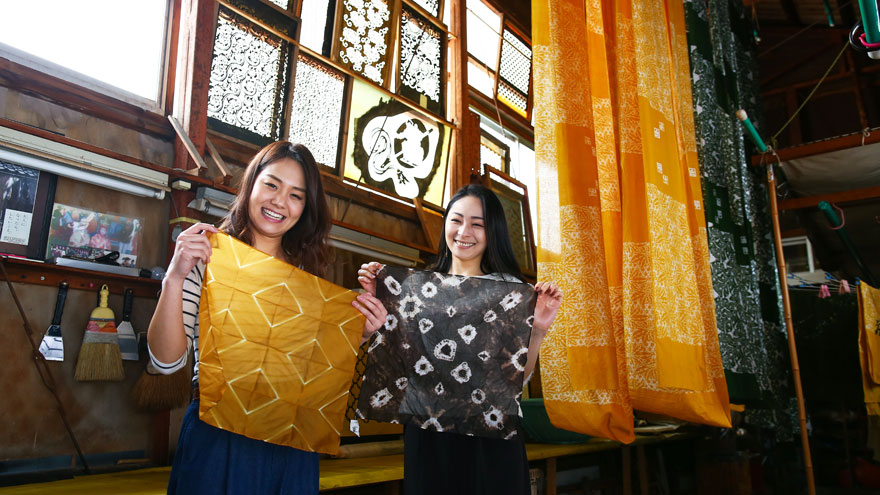
Yamagami Dyeing Shop is located in a traditional townhouse and has been run for 13 generations by a family that have been dyers since the Edo period. You’ll be able to experience dyeing objects with Murakami tea, which is a local specialty of Murakami city. Do try making an original handkerchief or coaster just for you! Another attraction is that you’ll be able to experience tea-dyeing and explore the townhouse at the same time.
You must sign up for the dyeing experience five days in advance to dye a handkerchief, or by the day before to dye a coaster.
Time required: One hour and 30 minutes (handkerchief); 30 minutes (coaster)
Prior booking: A booking must be made five days in advance for a handkerchief and by the day before for a coaster.
Capacity: 20 people.
Address: Yamagami Dyeing Shop, 2-17 Sakanamachi, Murakami, Niigata.
Transport access: 15 minutes’ walk from Murakami Station on the JR Uetsu Main Line.
Cost: 1600 yen per handkerchief (payment will be accepted for five handkerchiefs or more); 600 yen per coaster.
04
Townhouse walk
While you’re waiting for your tea-dyed works to dry, how about going outside and taking a walk through the townhouse area of the castle town of Murakami? This city which once flourished as a castle town in Murakami Domain is still dotted with traditional townhouses today.
This area is filled with things to see, such as Machiya Gallery Yamakichi, where local writers and traditional craftspeople display and sell their works; Sennensake Kikkawa, a shop that sells Murakami’s specialty salmon products; and Kokonoen, which has specialized in Japanese tea for 250 years.
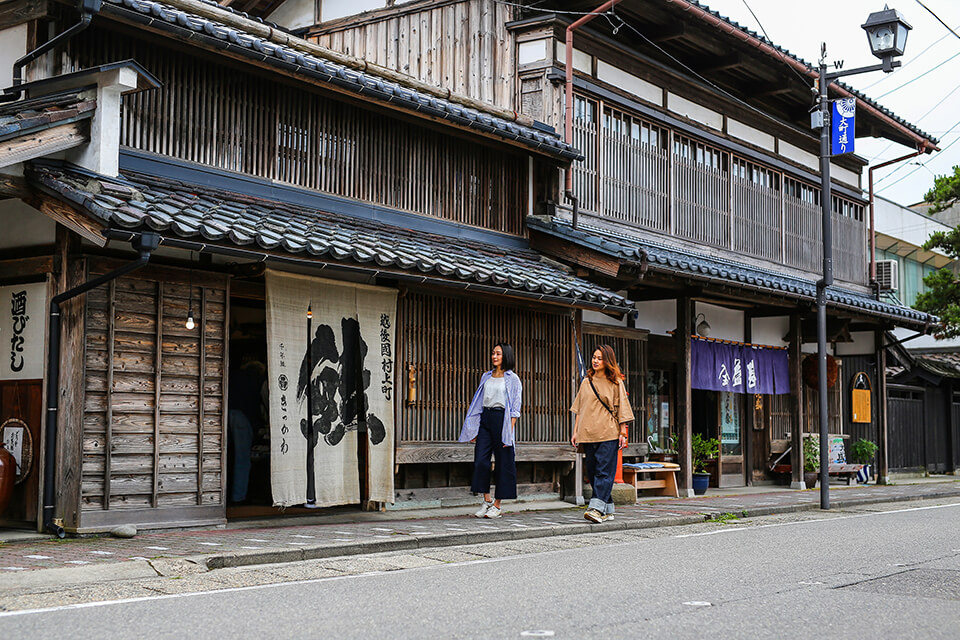
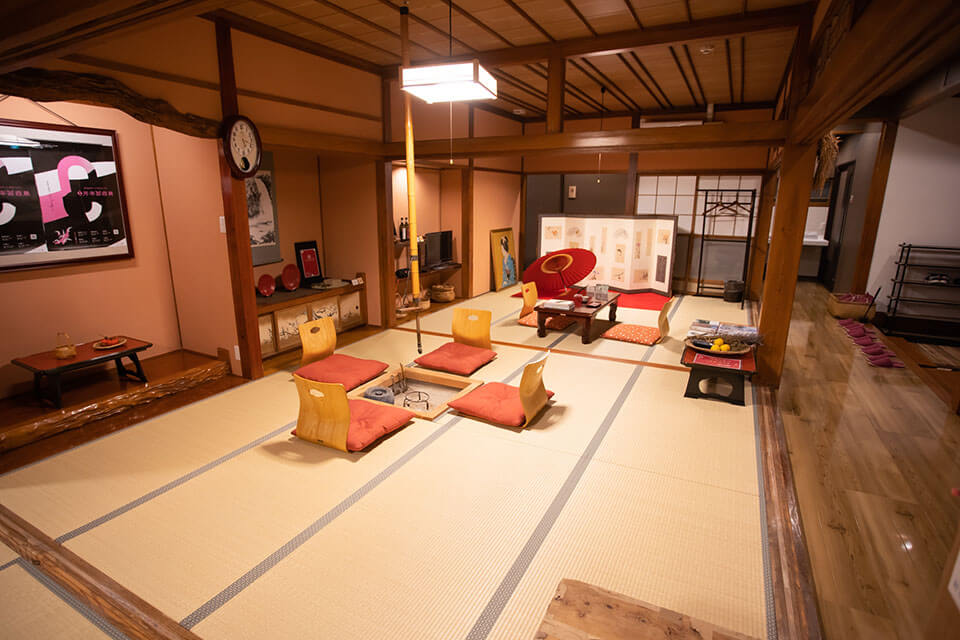
The local cuisine prepared with local ingredients by the Kakasa (moms) is also appealing. In spring, you can also enjoy picking edible wild plants.
URL https://guesthouse.iromusubi.biz/
Address: 808-23 Sasaki, Murakami, Niigata
05
Iromusubi Guest House
This experiential guesthouse opened in April 2019. It is built in a remodeled old-Japanese style house, and has a nostalgic ambience that lets you spend time in a relaxed manner.
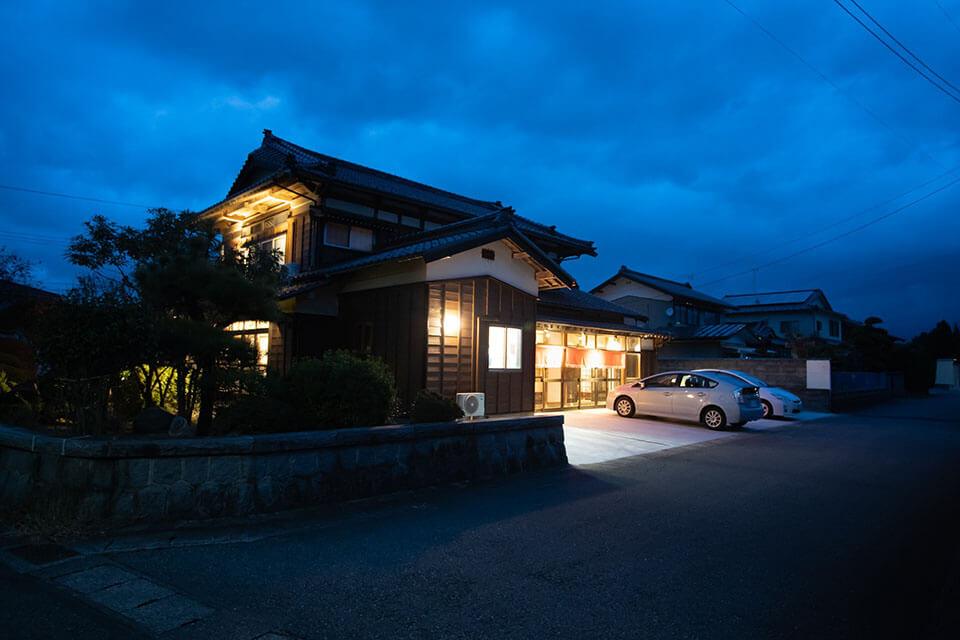
Day Two
JR Tsuruoka Station → Studio Sedic Shonai Open Set → Matsugaoka Reclamation Land → Suiden Terrasse or Mount Haguro temple lodgings
* We recommend traveling by rental car
01
Studio Sedic Shonai Open Set
This is an open set at the foot of Mount Gassan, with vast grounds of 88 hectares (264,000 tsubo). Numerous movies and TV dramas have been filmed here. It is dotted with many areas of differing appearances, such as a fishing village, a farm village, an inn town, and a mountain vllage, allowing you to observe real sets that were built for the purpose of filming. The round-trip bus (500 yen) is a convenient way to move around within the enormous premises.
As there are no shuttle buses or scheduled buses that go to Studio Sedic Shonai Open Set, we recommend that you take a rental car or a taxi.
URL http://openset.s-sedic.jp/
Closed from mid-November to late April and in winter
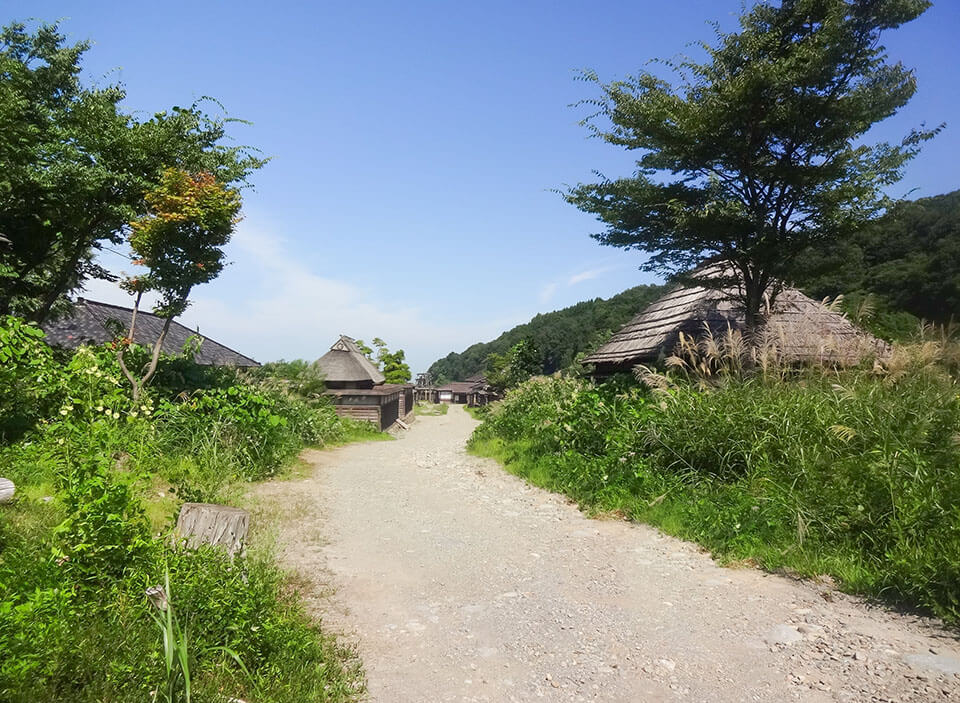
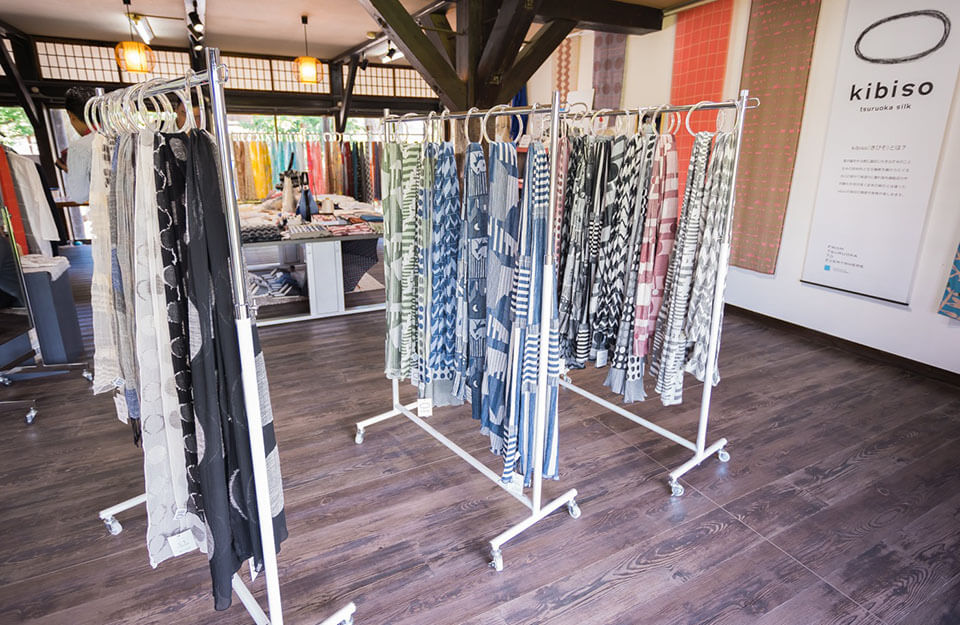
There is also a shop known as “kibiso Shop in Matsugaoka” that sells Tsuruoka’s specialty Tsuruoka silk, as well as the Matsuoka-gama Ceramics Classroom where you can experience ceramics as well as soba-making (with a booking).
Address: 121-1 Sannobayashi, Ichinoyama, Haguromachi, Tsuruoka, Yamagata
TEL: 0235-33-8310
Opening hours: 11:30 a.m. to 4 p.m.
Closed on Thursday
02
Matsugaoka Kaikonjo (Matsugaoka Reclamation Land)
The Matsugaoka Reclamation Land is a lushly green tract of land that was opened up by warriors of the old Shonai Domain in 1872. It has been designated as a national historic site. Today, five of the three-story silkworm-raising buildings built with tile roofing in the Joshu Shimamura style remain, one of which has been restored and is open to the public as a museum.
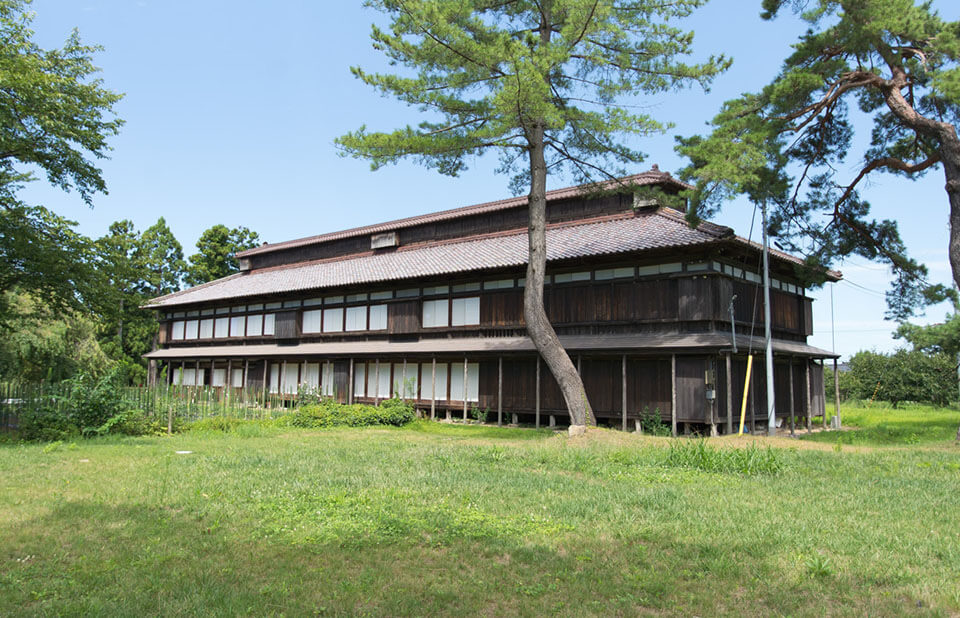
03
Mount Haguro Temple Saikan
Mount Haguro is a mountain that can be visited for worship throughout the year. It is filled with highlights such as its 2,446 stone steps, avenues of cedars, five-storied pagodas that are a national treasure, and Sanjingosaiden Shrine. To reach the top, you can choose to climb the 2,446 stone steps or to travel by bus.
When you have finished climbing the third slope (Sannosaka) on the path to the Mount Haguro shrine, you will notice the Mount Haguro Temple Saikan on your left close to the summit. Meals and lodging are available here, and you will be able to enjoy vegetarian cuisine passed down by Haguro’s itinerant mountain monks.
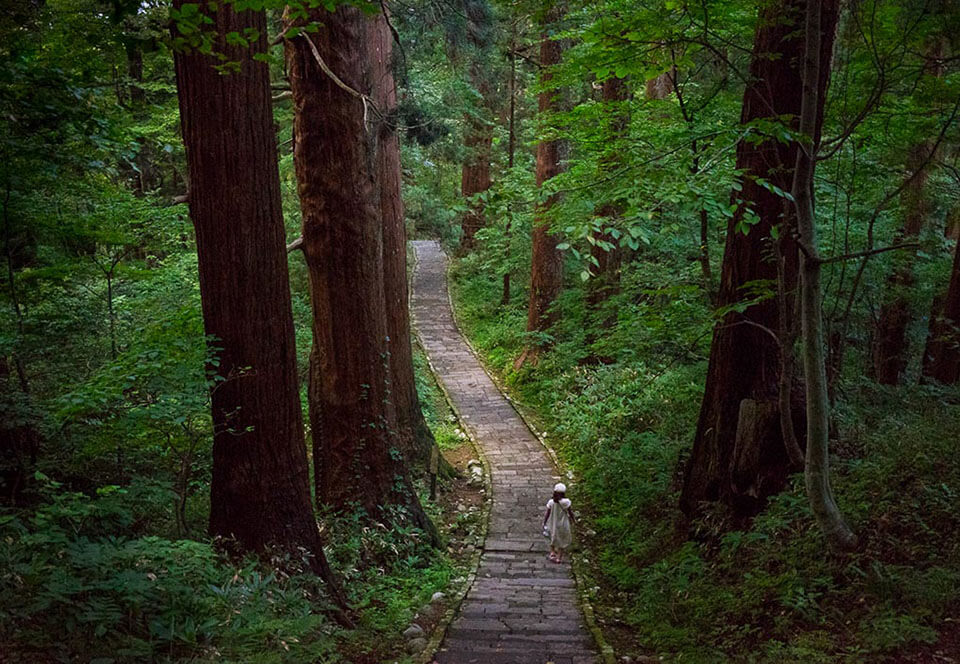
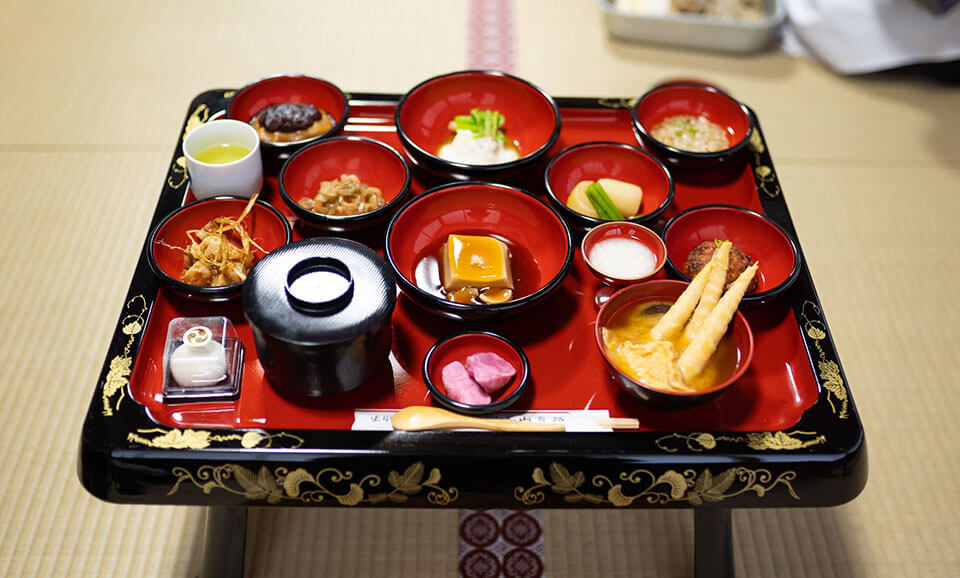
There are many other temple lodgings in front of the main temple gates of Mount Haguro.
Lodging: 8,800 yen (tax included) for one night’s stay and two meals; booking required
* The rooms are mostly not completely separate from one another, but have been created by partitioning larger rooms. There may be some days in winter when staying here is not possible.
You can also verify information about accommodation in Tsuruoka city at the following. www.tsuruokakanko.com
Day Three
JR Amarume Station → (by bicycle) Amarume Hachiman Shrine → Yamatozakura Brewery → Hanabusa Shoyu → Café Amarume-sei Pan (Amarume Bread) → Sakata Station → walk in Nakamachi → walk in Hiyoriyama Park → Sakata French → Kitamae Yokocho → accommodation in Hotel Rich & Garden or Wakaba Ryokan
On days with good weather, you can rent a bicycle at JR Amarume Station and use it to explore Shonai town.

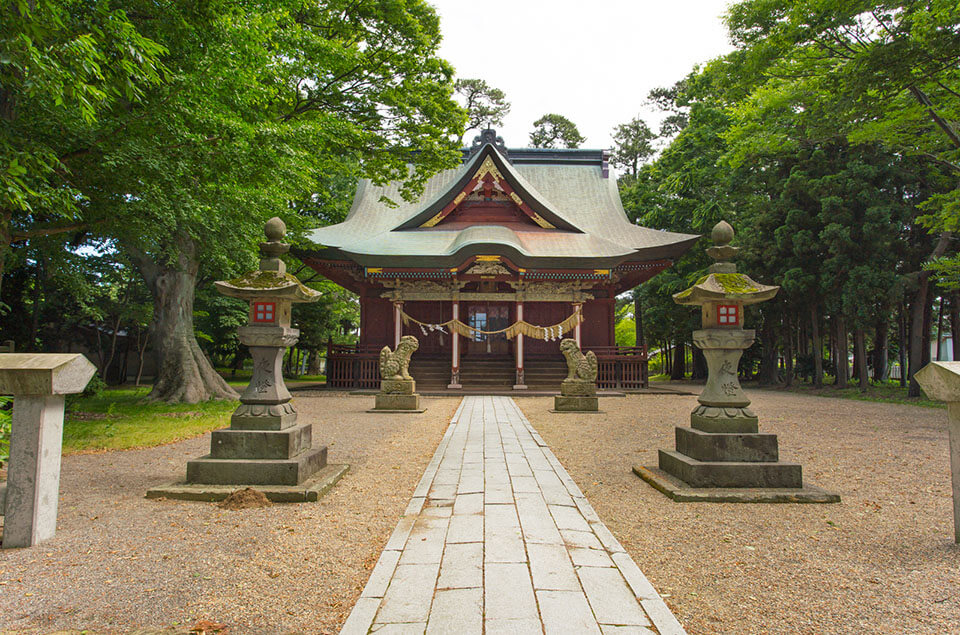
01
Amarume Hachiman Shrine
This is one of the three Hachiman shrines in Shonai and has drawn worshippers since long ago as the grove of the main village shrine in Amarume village. The shrine building was built in 1814 and is in the same style as Sanjingosaiden Shrine on Mount Haguro, but is half the size, making it a miniature.
Hachiman is said to be the god of prosperous industry, bountiful harvests, safe childbirth, and victory, and is also known for blessings involving passing examinations or sports victories. The Rikishi guardian statues that hold up the pillars are also a highlight.
Address: 149 Amarume, Shonai
Access: 15 minutes’ walk from Amarume Station
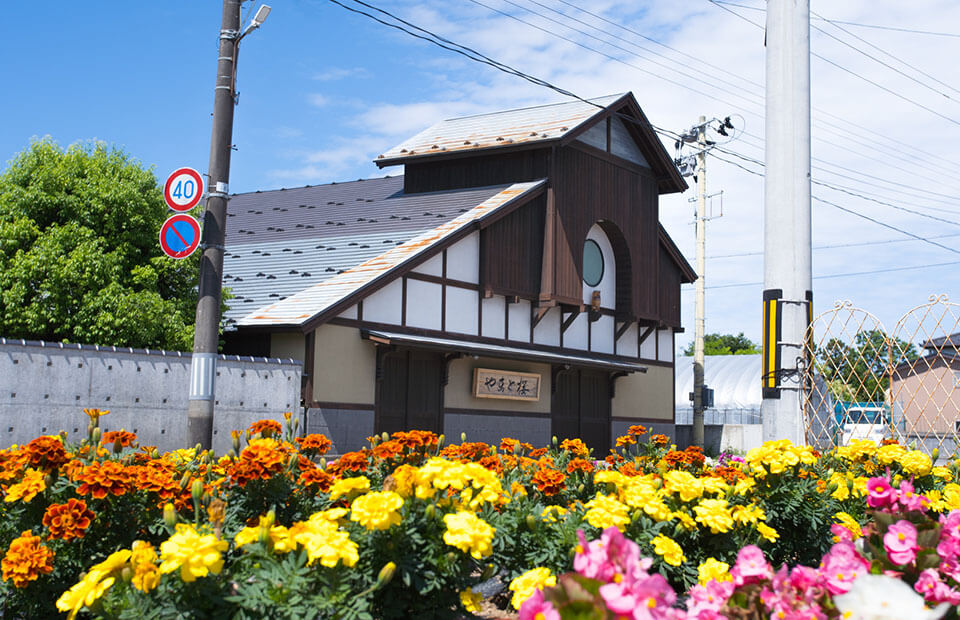
You can buy sake in this shop, as well as tour the facility with a booking.
02
Yamatozakura Brewery
A brewery founded in 1890. It uses underground water from Mogami River to produce gentle handmade sake that reflects the gentle character of Shonai.


03
Hanabusa Shoyu
This is an old shoyu (soy sauce) shop founded in 1823. Apart from shoyu and miso, it also produces and sells the all-purpose “Shoyu no Mi” condiment (shoyu fermenting mash). It also sells its products, which are perfect souvenirs of Shonai, in-shop. Apart from a tour of the cellars (booking required), the tasteful four-season garden is also a highlight. The tour is free of charge.
Address: 16 Amarume, Shonai-machi, Higashitagawa-gun, Yamagata
04
Café Amarume-sei Pan (Amarume Bread)
For lunch, we recommend Café Amarume-sei Pan, inside Classe in front of JR Amarume Station. The bakery is popular with local residents, and its fruit sandwiches using seasonal fruits as well as salted bread are all popular.
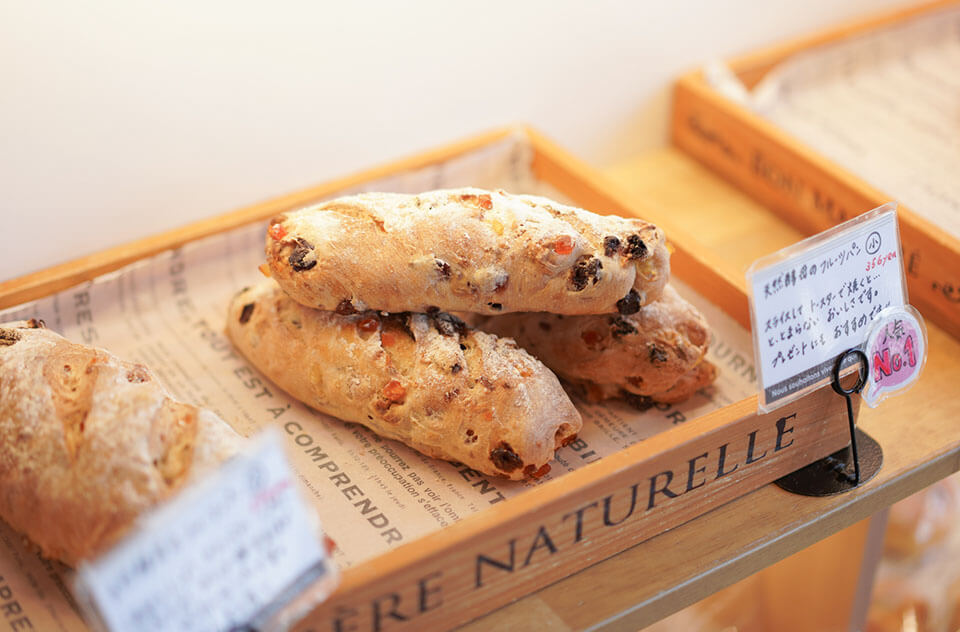
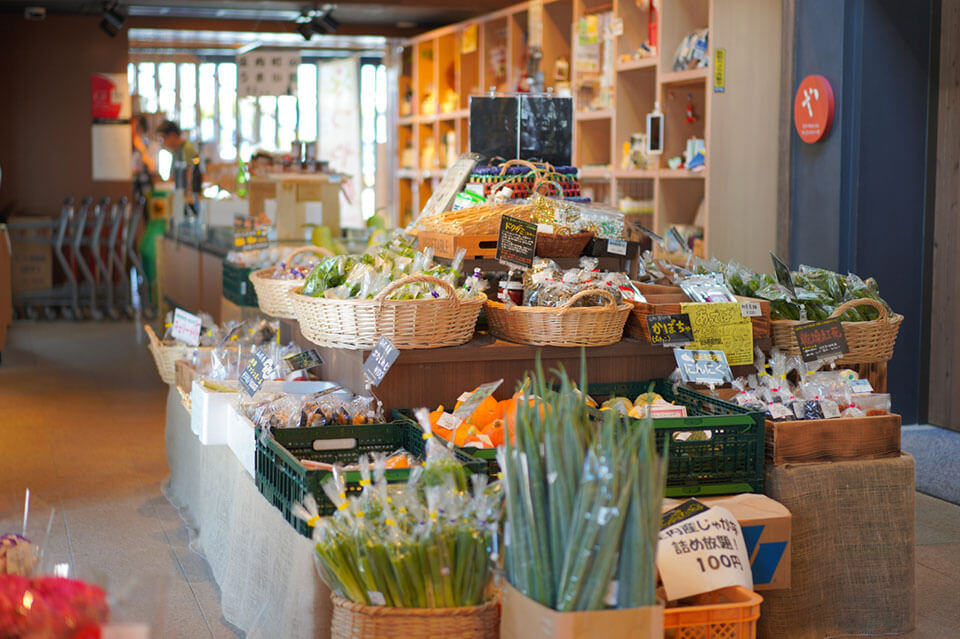
Classe also contains Nandemo Bazaar Addeba, which sells a wide variety of products such as local specialty goods, local vegetables, and traditional crafts, as well as the restaurant Yaku-Checchiano supervised by Masayuki Okuda.
Address: 108-1 Sawada, Amarume, Shonai-machi, Higashitagawa-gun
05
Walk in Nakamachi, Sakata city
Sakata city prospered as a port of call for cargo ships that sailed the Sea of Japan during the Edo period. In Nakamachi, you’ll be able to see historic Shonai buildings such as Kyu-Abumiya, the premises of port wholesalers who built their wealth on cargo ships, as well as the former Honma family residence, the mansion of the wealthy merchant Honma family.


Another tourist facility that is representative of Sakata is the Sanno Club, which has a permanent exhibition room for kasafuku ornaments, one of the three great hanging ornaments of Japan. The colorful kasafuku ornaments look extraordinary in photographs.
06
Hiyoriyama Park
Hiyoriyama Park is on high ground that overlooks the Sea of Japan, and has Japan’s oldest hexagonal lighthouse made from Japanese linden, as well as a direction stone. To let visitors feel the history of the port city of Sakata, it includes a half-size model of an Edo-period cargo ship. The park is also known for cherry blossoms, and many people visit in spring to view them.
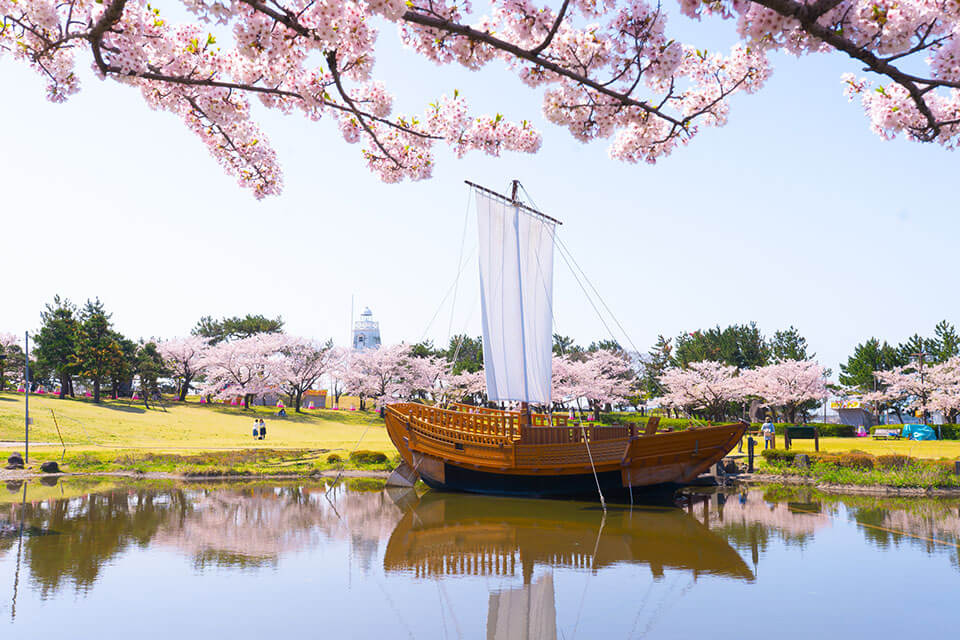
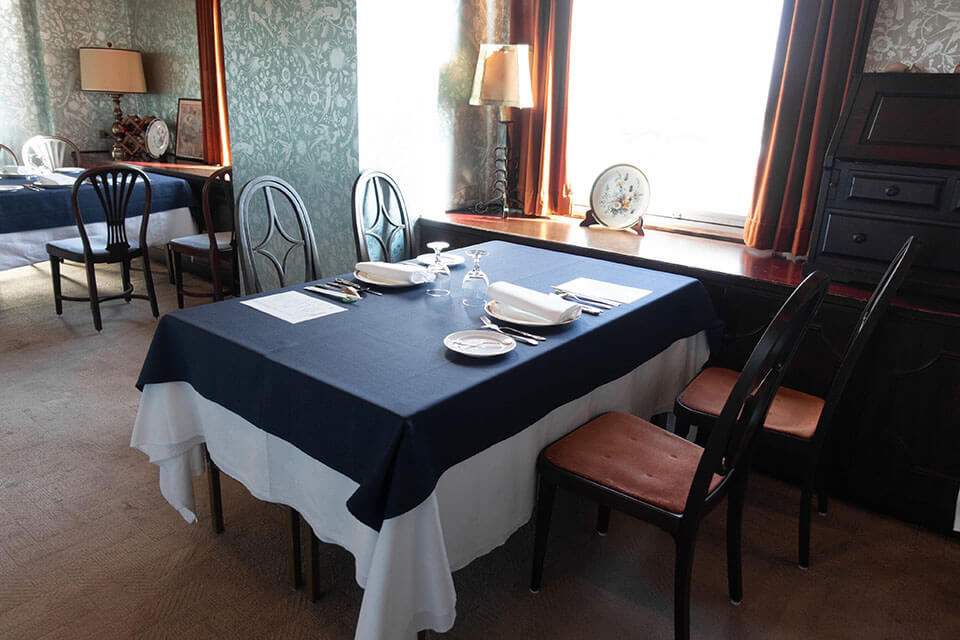
07
Sakata French
Shonai is also a food capital, and many well-known French shops are here. The restaurant “French-style local food: Le Pot Au Feu” operates on the principle of local production for local consumption; you’ll be able to enjoy French cuisine filled with Shonai flavor, such as fresh seafood from Shonai Beach and seasonal vegetables, to your heart’s content.
08
Kitamae Yokocho
Kitamae Yokocho is a “food-stall village” that bustles with residents and tourists at night. It includes about 10 side-by-side shops of different types, and you’ll also be able to go barhopping.
URL www.kitamae-yokochou.com
Address: 2-6-1 Nakamachi, Sakata, Yamagata
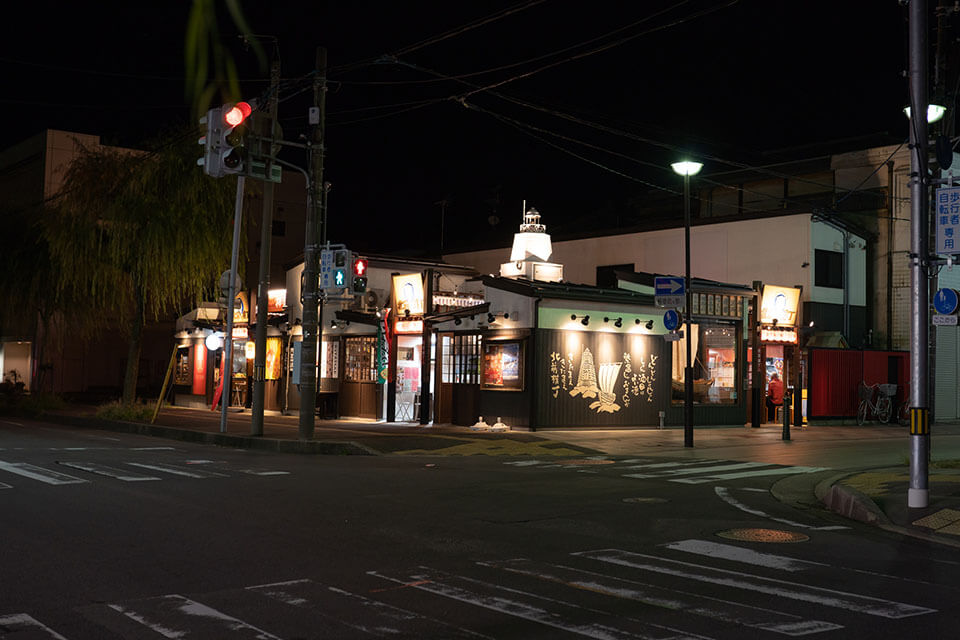
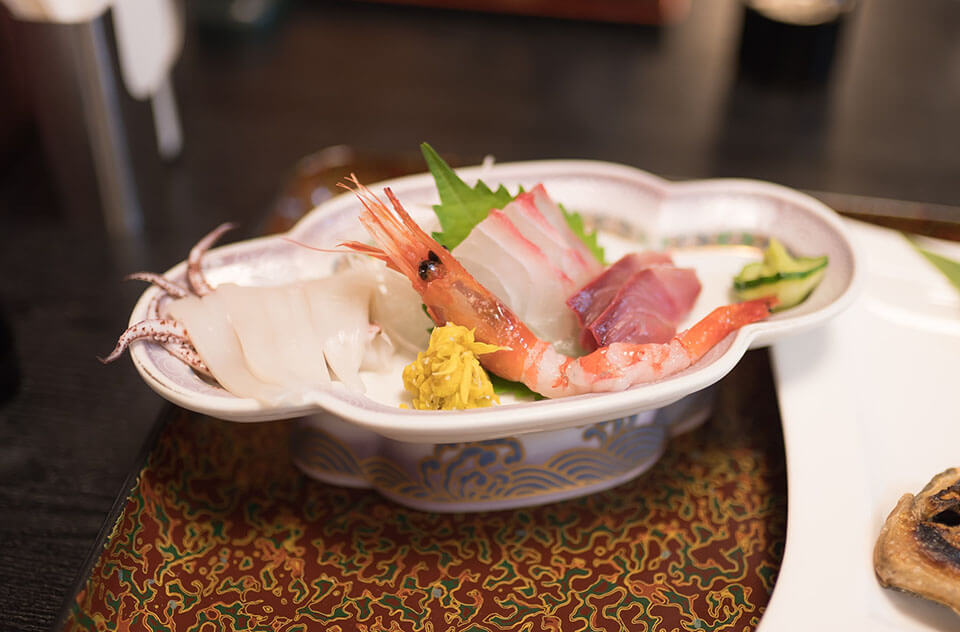
The 24-hour medicinal bath is also appealing.
09
Wakaba Ryokan
This is an old ryokan (Japanese inn) that gives you the feeling of Taisho-era romance. It’s in an ideal place for you to explore the tourist spots around Nakamichi in Sakata.

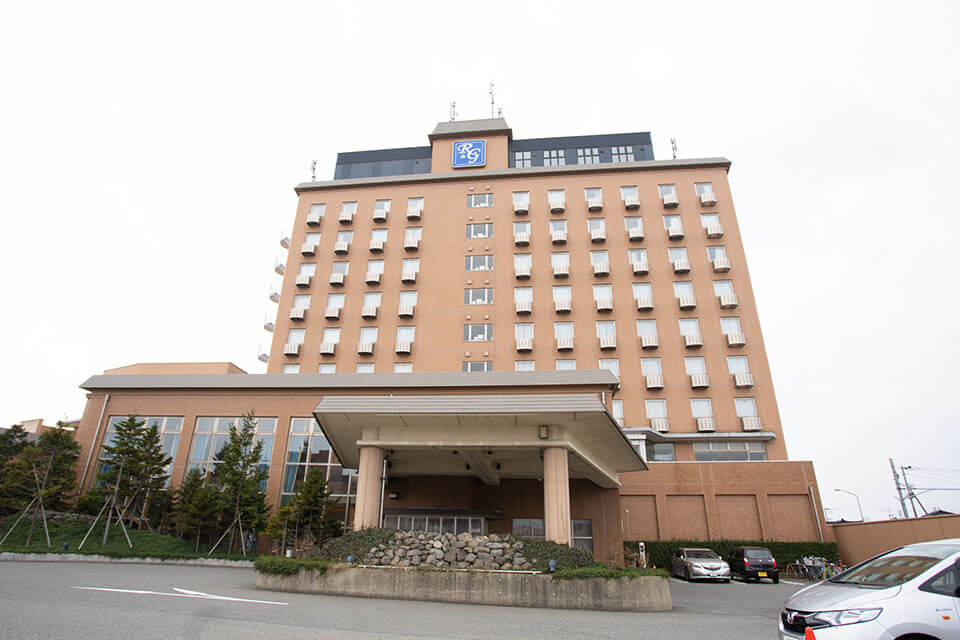
10
Hotel Rich & Garden Sakata
We’ll introduce another place to stay in Sakata city.
Hotel Rich & Garden Sakata is a high-quality hotel with Northern European flavor, and its breakfast buffet with plenty of vegetables is popular. On sunny days, you can gaze at Mount Chokai from the restaurant.
URL www.richgarden.co.jp
Address: 1-1-1 Wakatakecho, Sakata, Yamagata
Day Four
01
Minato Market and Sakata Seafood Market
The port city of Sakata is a place to enjoy delicious seafood. Right next to the Port of Sakata, the Sakata Seafood Market and Minato Market offer restaurants filled with seafood freshly caught at Shonai Beach, as well as shops that sell Sakata’s local specialties or alcohol.
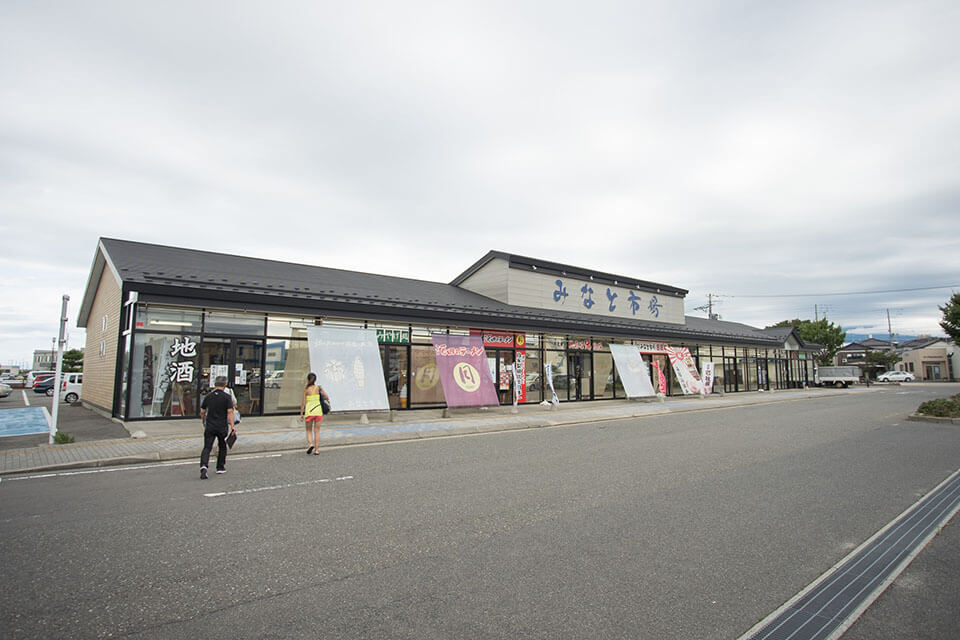
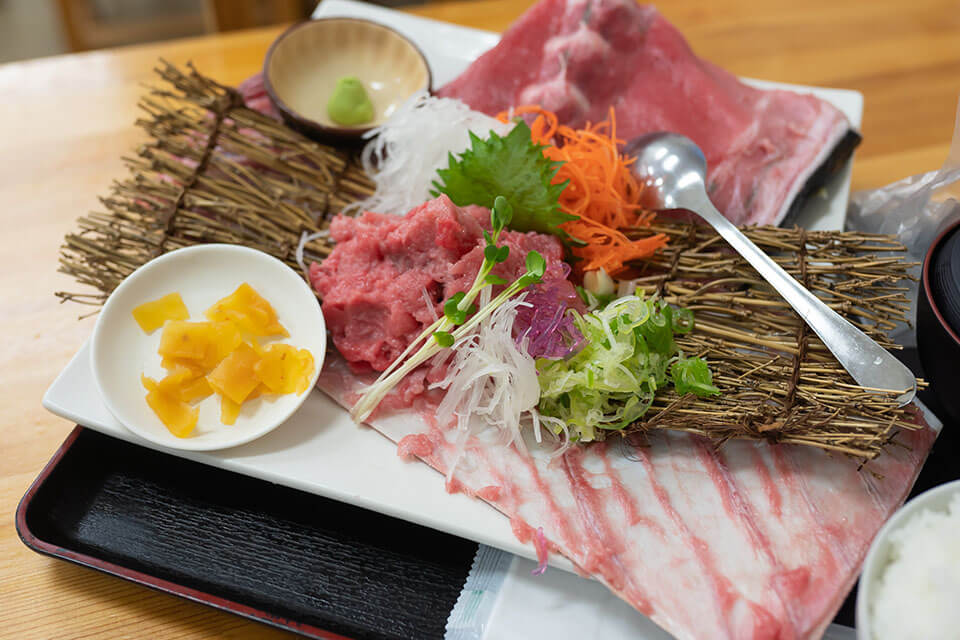
The tuna speciality shop “Komatsu Maguro Speciality” lets you enjoy rice bowls with various tuna parts at a reasonable price.
URL https://sakata-kankou.com/
Address: 2-5-56 Funabacho, Sakata, Yamagata
02
Sankyo Warehouses
The Sankyo Warehouses are a symbol of the rice-producing region of Shonai. They are warehouses for the storage of rice that were built in 1893. The premises include a museum on the history of rice in Shonai, a souvenir shop, and a restaurant, and are bustling with tourists.
The beautiful rows of Japanese zelkova have also been used in the filming of advertisements or dramas, and are a popular photo spot.
The tourism product center “Sakata Yume no Kura” is filled with souvenirs of Sakata. Why not get your souvenirs here at the end of your journey?
URL www.sakata-kankou.com
Address: 1-1-8 Sankyomachi, Sakata, Yamagata
Opening hours: 9 a.m. to 6 p.m.
* The closing time is 5 p.m. from December to February
